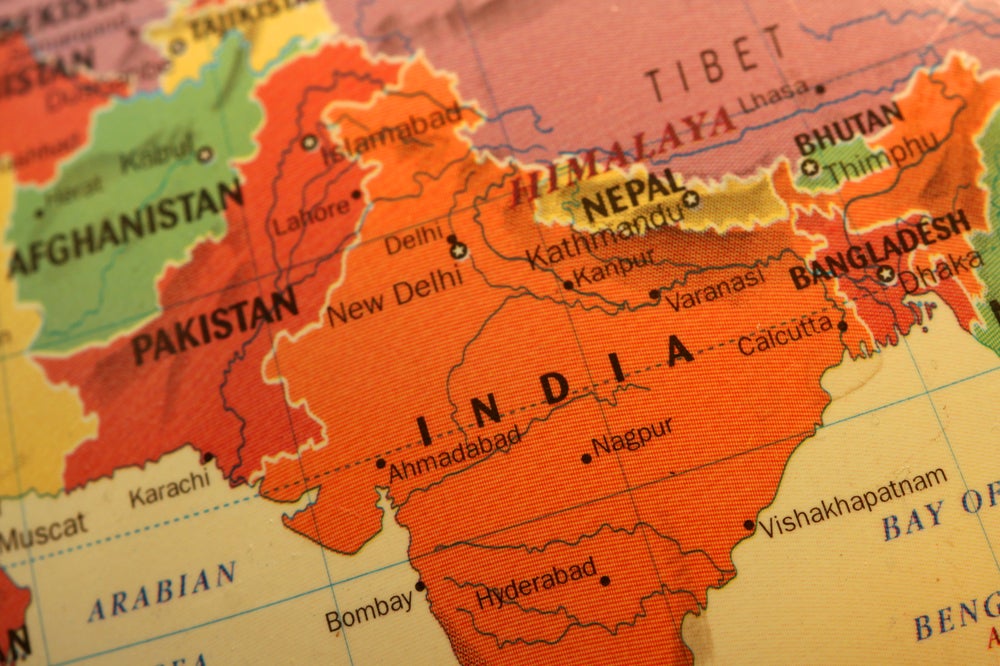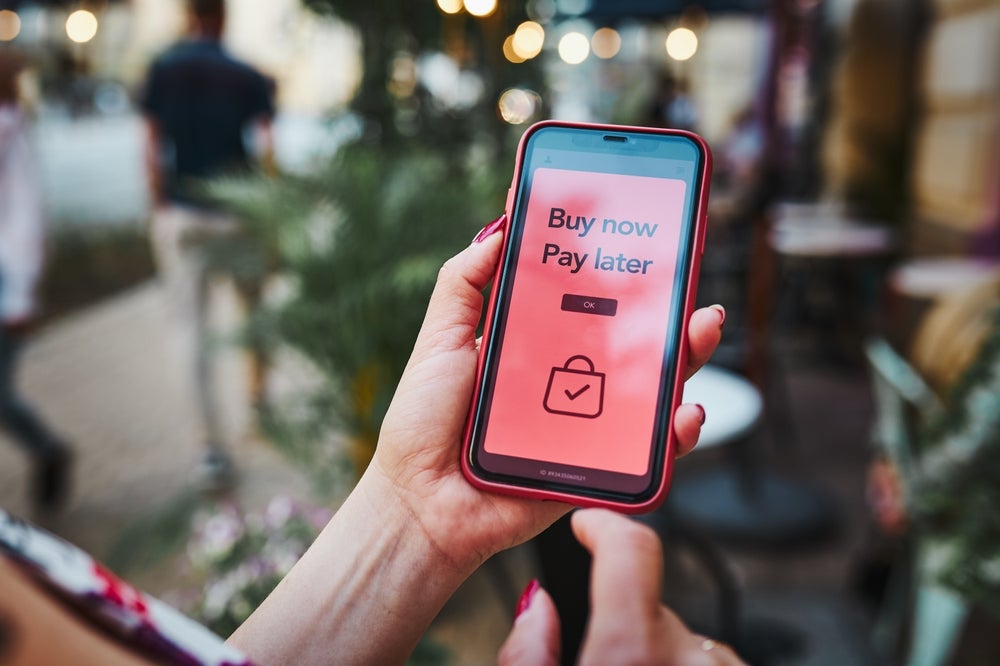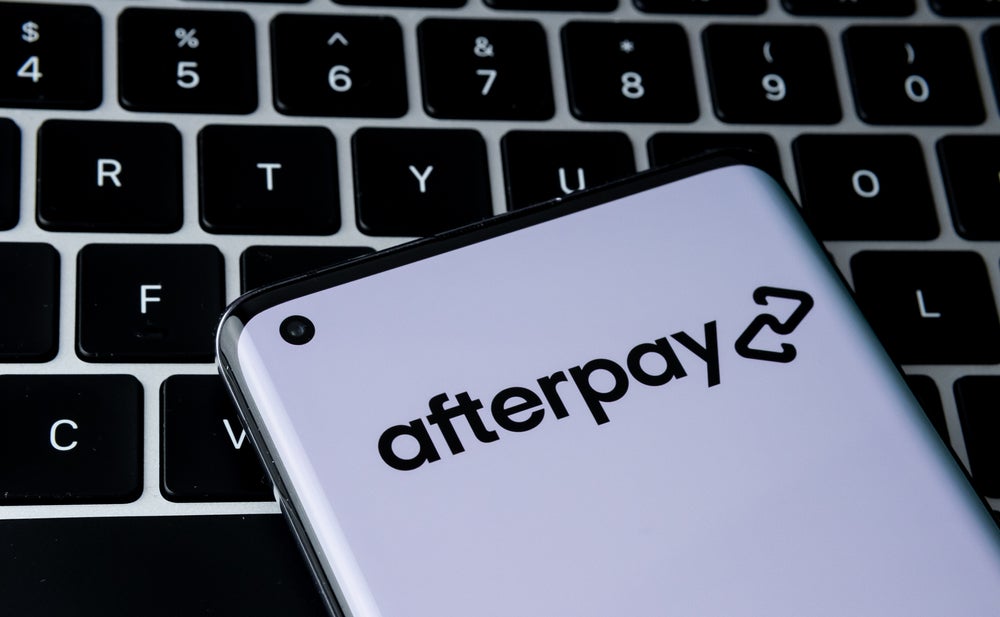India’s strong economic performance over the past few years has
undoubtedly contributed to the strong growth in the cards market.
GDP grew at a rate of 7.5 percent in 2005 and 9 percent in 2006,
and is expected to show growth of around 9.4 percent in 2007,
indicating a significant growth over the 5.2 percent annualised
growth the Indian economy achieved over the course of the
1990s.
This growth is having appreciable effects on the levels of
disposable income that Indians have to spend. For example, the
proportion of households in the middle income bracket is expected
to increase from 28 percent of total in 2002 to 46 percent by 2010,
with obvious implications for discretionary spending. Furthermore,
according to data from Indian research institution the National
Council of Applied Economic Research, migration to higher income
levels in the top 24 cities is growing at over 40 percent per
annum. At the same time, consumer finance represents a relatively
small component of GDP at an estimated 13 percent, leaving ample
scope for growth.
Debit cards
The debit card market has shown explosive growth over the past few
years. For example, according to the central bank, the Reserve Bank
of India (RBI), there were 49.8 million debit cards in issue as of
31 March 2006. But just 12 months later, there were an estimated 75
million debit cards in circulation (an increase of over 50 percent
in a single year) and by the end of October 2007, the number had
leapt to 89.7 million debit cards. (See Figure 1.)

Spending on these cards, although growing quickly, has not kept
pace with issuance. According to the RBI, the use of card-based
payments rose strongly during 2006-07, but remains negligible
compared to conventional cheque-based payments. Debit cards
continue to be used largely for cash withdrawals, although this is
changing. More debit cards are being issued as public sector banks
are increasingly targeting customers in smaller cities. In May
2007, Visa announced that India had become the largest market for
Visa debit and prepaid cards in Asia-Pacific, with about 33.9
million such cardholders by the end of 2006.
How well do you really know your competitors?
Access the most comprehensive Company Profiles on the market, powered by GlobalData. Save hours of research. Gain competitive edge.

Thank you!
Your download email will arrive shortly
Not ready to buy yet? Download a free sample
We are confident about the unique quality of our Company Profiles. However, we want you to make the most beneficial decision for your business, so we offer a free sample that you can download by submitting the below form
By GlobalDataATM network coverage and the facilities provided by banks
through ATMs continues to grow. As of October 2007, there were over
31,000 ATMs across India. National Financial Switch (NFS), an ATM
and inter-bank payment gateway, was set up in 2004 to facilitate
connectivity among ATM switches of banks to enable bank customers
to access any ATM across the country. As of mid-2007, the NFS
network connected 12,940 ATMs of 25 participating banks.
The RBI has been encouraging banks to use the ATM channel to
promote greater financial inclusion. In a draft paper of December
2007, the RBI suggested freezing cash withdrawal charges, and
ultimately removing them from April 2009, as part of a drive to
couple charging transparency with technology adoption to encourage
more widespread use of ATMs.
Over the past few years, the number of POS terminals in India
has grown significantly. According to an estimate from Visa
International, there were 306,000 POS terminals as of 31 March
2006, compared to 40,000 terminals in March 2002. Visa card sales
volumes, which include retail sales volume and ATM transactions,
rose by 47 percent to $432 billion at 31 March 2006 from the
year-before period. More than 80 percent of the terminal base in
India was EMV chip-enabled by end-March 2007.

Credit cards
The number of credit cards has grown rapidly in recent years, with
the number in issue climbing from 17.3 million at the end of March
2006 to 25.6 million by end-October 2007. However, penetration is
still low for a country with well over 1 billion inhabitants.
India has a long way to go before card spend and penetration
levels reach those of other Asian countries. For example, there is
an average of 0.02 credit cards per inhabitant in India, compared
with 0.04 per inhabitant in China and around 3 per inhabitant in
South Korea. Due to the uneven distribution of wealth in the
country, wealthy Indian consumers may carry several credit cards in
their wallet. The product is still viewed as a status symbol by
many.
Use has been also increasingly rapidly, with purchase volumes
growing by 19.2 percent CAGR over the past three fiscal years,
while purchase values have grown by 32.8 percent CAGR over the same
period. (See Figure 2.) But again, compared to world standards,
levels are low. For example, as of August 2006, SBI Bank estimated
that personal consumption through credit cards was one of the
lowest, at 1 percent in India compared to the world average of 8.6
percent, Asia-Pacific’s 6 percent and even China’s 3 percent.
According to a consumer lifestyle survey commissioned by
MasterCard International, 72 percent of Indians questioned use
their credit cards one or two times a month, 23 percent use them
three to five times and the remaining 5 percent six to ten times.
Only 14 percent of those Indians surveyed indicated they owned a
credit card. In terms of the average monthly spending on credit
cards, 73 percent of Indians said they spend less than $35, while
25 percent spend between $35 and $300. Only 2 percent of Indians
spend over $300 on their credit cards every month.
In the commercial cards market, the total volume on Visa
commercial cards in India reached $1.9 billion in 2006. Visa
currently works with six member financial institutions in India.
Visa believes that the scope for future growth is significant and
estimates that, of the total commercial consumption expenditure in
the country, close to $250 billion can be addressed by commercial
card solutions.

Government involvement
There are several examples of the Indian authorities acting to use
credit cards to promote specific economic policy objectives as well
as to control the evolution of the wider credit card market. For
example, the Kisan Credit Card (KCC) scheme was introduced in
1998-99 to provide adequate and timely credit support to farmers
from the banking system. During the 2006-07 fiscal year, public
sector banks issued 4.8 million KCCs for limits totalling over
INR262 billion ($6.7 billion). Since the inception of the scheme,
26.6 million KCCs have been issued by public sector banks, with
limits amounting to over INR947 billion.
More recently, Indian banks were asked by the authorities to
consider introducing a general-purpose credit card facility
offering a revolving credit facility up to INR25,000 without
insisting on security or purpose at deregulated interest rates at
their rural and semi-urban branches.
As competition in the credit card market has intensified over
recent years, issuers have become more aggressive in terms of their
marketing efforts. In light of this, all scheduled commercial banks
involved in credit card operations were advised by the regulators
in November 2005 to maintain a Do Not Call Registry in order to
tackle consumer complaints relating to the telemarketing efforts of
banks.
New products tap into affluence
A considerable number of recent launches are premium products aimed
at seizing the opportunities created by a richer population. In
July 2007, for example, ICICI Bank launched the ICICI Bank Visa
Signature Credit Card, which ICICI views as offering benefits
significantly beyond existing premium offerings. It has a joining
fee of INR25,000 and an annual subscription of INR2,500, and
cardholders are offered generous membership benefits such as a Tag
Heuer watch or travel vouchers.
Another example is that of American Express, which in November
2007 teamed up with Kingfisher Airlines to launch the American
Express Kingfisher First Credit Card in association with telecoms
provider Airtel, which aims to tap into the rapidly increasing
travel patterns of affluent Indians. In 2006, air travel in the
country increased by 45 percent over the previous year.

Credit concerns
Following the huge surge in credit card use over the past several
years, concerns about debt levels are emerging. For example, the
default rate on credit cards is the highest across different loan
categories in the country. The rate for credit cards has risen from
7 percent to 9 percent of total outstanding payments in 2006 to
about 10 percent to 12 percent in 2007. (For comparison purposes,
the default rate is 3 percent to 4 percent for personal loans, 2
percent for auto loans and less than 1 percent for mortgage
loans.)
As Figure 3 shows, the amount of credit card outstandings has
risen rapidly over the past few years, representing a 43.9 percent
CAGR from March 2005 to March 2007.
Over the past two years, the buying habits of Indian credit
cardholders have shifted significantly. Travel and dining have
joined jewellery as the top three purchases that Indians make
through credit cards. Air travel, both domestic and international,
has become more affordable for many consumers and such travel can
now be paid for with a credit card. Eating out is becoming a much
more regular feature for households. Two years ago, the figures
were largely skewed in favour of jewellery and apparel purchases,
while travel and hospitality was a small component.
Fuel currently accounts for a very small portion of credit card
spend as it is largely bought by debit card; however, credit card
spending on fuel is expected to grow at around 50 percent over the
next four to five years. Payment of utility bills, such as
electricity and water, is another segment that has been growing
rapidly, although the numbers are still relatively small.
The remittance market
According to the RBI, Indians living abroad transferred $24.6
billion to India in fiscal year 2005-06. This makes it one of the
top destinations for remittances in the world. The average size of
remittances transfer to India is relatively high. Remittances with
average size of $1,100 and above accounted for 52 percent of the
total value of remittance inflows. In addition, there is
considerable movement of funds from urban areas to rural areas.
This has created opportunities for plastic cards and other
payment mechanisms. In 2004, for example, the Visa Money Transfer
service was launched in India. It is a domestic card-to-card money
transfer service that enables a Visa cardholder to transfer money
conveniently and securely to another Visa account number. In
October 2007, Visa announced that it was expanding the service to
mobile phones. The partners involved are Corporation Bank, HDFC
Bank, ICICI Bank and mobile payments and security company mChek.
Initially, this service will be a pilot programme available to Visa
cardholders of those three banks. The recipient can be a Visa
cardholder of any bank in India and the money can be transferred to
a mobile phone or Visa card.
Estimates for the number of mobile phone subscribers in India as
of October 2007 range from 166 million to 213 million. Several
players including both Visa and MasterCard are analysing various
mobile options in India. This is because there are estimated to be
far fewer banked customers than mobile phone customers. Indeed,
according to Boston Consulting Group, about 135 million households
– 65 percent of the total population – do not have access to basic
banking services.
Similarly, in December 2007, MasterCard Worldwide and State Bank
of India launched MoneySend, a card-to-card money transfer pilot
programme that will offer instant online authorisation and transfer
confirmation. MasterCard or Maestro cardholders will be able to use
the service to transfer money to family members or friends.
Key players
The largest credit card issuer in the country is ICICI Bank, which
has an estimated market share of around one-third of all credit
cards in issue. Other key issuers are Citibank, HDFC Bank, SBI
Bank, Standard Chartered and HSBC. (See Figure 4.) New entrants
continue to be attracted by the market’s potential. For example, in
January 2007, Barclays announced that it would be moving into
retail banking in India by offering credit cards and personal
loans. In October 2007, it outlined plans to launch the Yatra
Barclaycard, a co-branded credit card and a multi-carrier frequent
flier programme, in association with the Yatra Online, the travel
services company.

ICICI Bank
At 8.5 million cards issued, ICICI Bank is the largest credit card
issuer in India. ICICI is the second-largest bank in India and is
the country’s largest consumer credit provider. As of July 2007, it
had 945 branches and extension counters in non-bank locations and
3,460 ATMs.
ICICI credit card receivables totalled INR35.4 billon at the end
of fiscal year 2006, rising to INR60.8 billion at the end of fiscal
year 2007. The proportion of retail loans and credit card
receivables in the total retail portfolio increased from 9.8
percent at end-fiscal year 2006 to 13.6 percent at end-fiscal year
2007. (These numbers include all global operations but the vast
majority of credit card receivables are in India.). By the end of
fiscal year 2007, the bank had a debit card base of about 10
million cards.
Commission, exchange and brokerage increased by an impressive
56.8 percent over 2006-07, primarily due to growth in credit card
fees and third-party product fees, increased remittances and other
fees from international banking business, and growth in corporate
banking fees.
SBI Cards
SBI Cards is India’s second-largest credit card issuer with 3.6
million cards in force. A joint venture dating to 1998 between the
State Bank of India (SBI) and GE Capital, SBI is the largest
commercial bank in the country, in terms of profits, assets,
deposits, employees and branches. Its largest single shareholder is
the RBI. The bank has over 9,000 branches.
Cards offered by SBI Cards include the SBI Silver & More
card, SBI Gold & More card, SBI Platinum card and a range of
partnership cards. SBI Cards also offers dual-branded credit cards
in partnership with United Bank of India (which are available only
to UBI customers) and with industrial conglomerate Tata. As of
August 2006, the company estimated that the average spend per annum
on SBI cards was INR21,000 on Classic (International) cards and
INR45,000 to INR48,000 on Gold cards.
Citibank
Citibank is India’s third-largest issuer of credit cards, with 3.5
million cards issued in 2007, up from 2.85 million cards as of
March 2006. Citibank India offers 27 different cards covering
premium cards, rewards cards, affinity cards, travel cards and
Diners cards, in addition to basic cards. In December 2006,
Citibank India began rolling out biometric ATMs that recognise
account holders’ thumbprints, eliminating the need for a personal
identification number, and have colour-coded screen instructions
and voice-overs to guide them through transactions. The facilities
are aimed at urban low-income microfinance customers.
In October 2007 Citibank announced a joint venture with Reliance
Retail to establish a non-banking finance company. Reliance Retail
is a part of India’s largest business group and the joint venture
will deal primarily in loans and credit cards for Reliance Retail
customers. The investment is believed to be in the region of INR4.3
billion to INR4.5 billion.
HDFC Bank
With 3.5 million cards issued, HDFC ties with Citibank as the
third-largest credit card issuer in India. The bank also has over 4
million debit cards in the market. As of 30 June 2007, it had a
network of 753 branches and 1,605 ATMs in 320 towns/cities across
India. Its credit card range includes the Silver, Gold and Titanium
credit cards, Woman’s Gold Card, Platinum Plus Credit Card, Visa
Signature Credit Card, Value Plus Credit Card, Health Plus Credit
Card and two main offerings for commercial customers – the Business
and Corporate credit cards.
HDFC Bank’s debit card offerings include EasyShop International
Debit Card, EasyShop Gold Debit Card, EasyShop International
Business Debit Card, EasyShop Women’s Advantage Debit Card,
EasyShop NRO Debit Card and the Kisan Card. The bank has also
introduced a number of prepaid offerings, including ForexPlus Cards
(for travel purposes), FoodPlus Cards (eliminating the need for
meal vouchers) and GiftPlus Cards.







